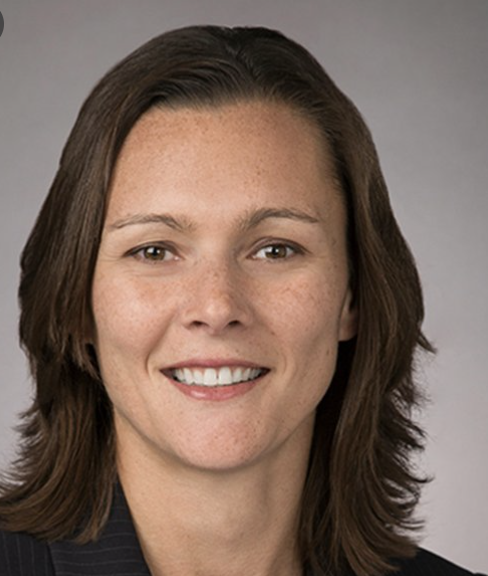Rachel Elsby is a partner with Akin Gump’s Intellectual Property Practice and holds a Ph.D. in immunology. In her role, she focuses on biotech, biologics and medical devices. Here she discusses the current state of patent litigation, shares insights on collaboration within the pharmaceutical and other healthcare organizations, and outlines best practices for engineering and maintaining a strong IP portfolio.
The COVID-19 pandemic has been a great example of our system working well. What has the landscape been within patent litigation and appeals to the federal circuit court of appeals? And what if any changes do you anticipate with the Biden administration?
Rachel Elsby: We've seen an uptick in patent litigation over the last year, even though we've been in this pandemic, and I believe that's going to continue at least in the short term. I also think we'll see more of a shift to Biologics Price Competition and Innovation Act (BPCIA) cases and competitor versus competitor biologics litigation, with even fewer Hatch-Waxman cases.
In terms of the Federal Circuit, I anticipate that we'll see some turnover in judges in the next few years, and we're also going to have a new chief soon. How that will impact the court, I'm not sure. Patent issues do not tend to cut along political party lines, so it is hard to predict whether a judge appointed by Biden will bring a pro-patent perspective. One thing to watch is whether the court will be more willing to hear cases en banc. There have been very few cases taken en banc over the last couple of years.
In terms of the Biden administration, I'm not sure that's going to have as much direct impact on patent law, at least not President Biden himself. But the one thing I'm watching, is who's going to replace Director Iancu at the Patent and Trademark Office (PTO). Director Iancu did a number of things to improve processes at the PTO, improve examination of patent applications and bring more balance to inter partes review (IPR) proceedings. I'll be watching who takes on that role under the Biden administration, and whether they’ll continue to pursue the initiatives that Director Iancu initiated.
What do you anticipate down the road with the COVID-19 vaccine?
From the perspective of a patent lawyer who focuses on the biotech industry, the COVID-19 pandemic has been a great example of our system at work. Biotech and pharmaceutical companies rushed to action in response to the public health emergency, setting up new partnerships, developing new technologies, engaging in new licensing agreements, and really being collaborative in the process.
I focus on the pharmaceutical industry because that's my practice, but it's happening in other industries as well. It's remarkable to see this sort of activity in the pharmaceutical industry, and, as we look forward, that work will probably translate into new and better medicines. And I hope patent law is able to provide the protection these companies need to continue to invest in research and development, so they're able to respond in a similar way to future public health emergencies.
You regularly represent some of the world's most innovative companies like 3M and Bristol-Myers Squibb (BMS). What are some of the best practices companies can adopt to protect and secure trade secrets and protect intellectual property?
The companies that protect their IP the best do so through a combination of mechanisms, including patents and trade secrets. Those companies also implement their policies consistently over time, and have great communication between the legal department and the scientists and engineers who work on developing new technologies. I'm not sure you need a precise practice. The key is using the appropriate means of protection, being consistent in how you implement your practices, and maintaining open communication within the company. You mentioned 3M and BMS, two companies that exemplify what it means to have a collaborative work environment, which is a key element in establishing and maintaining a strong IP portfolio.
Please tell us about willful infringement, as it relates to patent law and litigation. What should our readers and their colleagues understand about this element of patent law and litigation?
Willful infringement gets a lot of attention in patent litigation, because it has the potential to result in enhancement of damages of up to three times what a jury or the court awards for actual damages. The important analysis under current law for willful infringement focuses on the subjective beliefs of the accused infringer. In some ways, this goes back to your question about best practices. It's setting up practices internally, so if you find yourself in litigation you have the proofs in place to show that you acted reasonably. Have you set up enough of an internal system to address when you learn about IP that may be a concern for your company or for technologies you're developing? Can you show you took the proper steps to address that?
Is there anything we missed?
I would be remiss if I didn't mention the importance of diversity in our profession. Investing in our junior attorneys, building diverse teams, and making sure everyone has an opportunity to develop is crucial. It makes our teams stronger and better at what we do. I've certainly benefited from opportunities that were provided to me throughout my career. BMS, for example, was a company that trusted me and gave me opportunities when I did not have that much experience. I would not be where I am today without those opportunities. I feel like all of us, as we become more senior in our careers, have an obligation to pay that forward to the next generation.
Published April 6, 2021.



